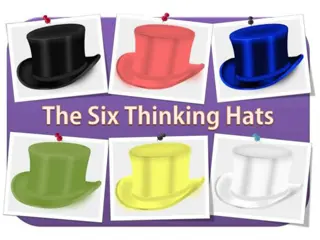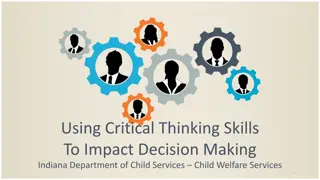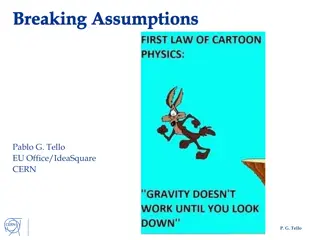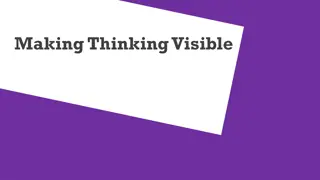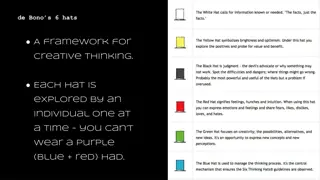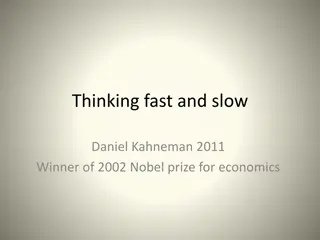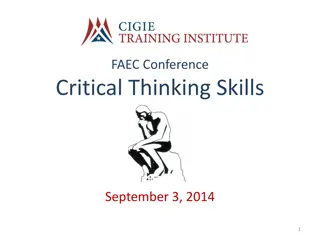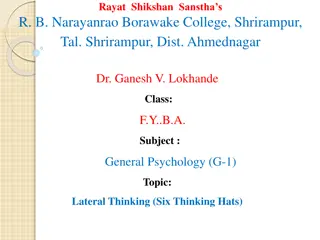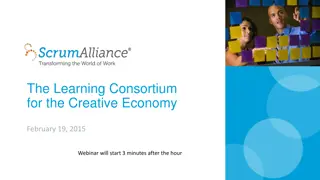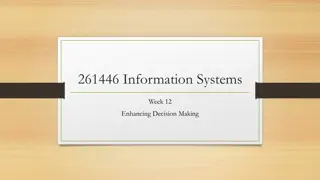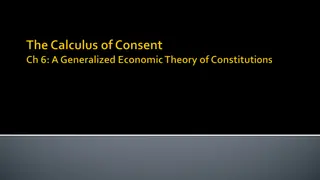Comprehensive Guide to Decision Making and Creative Thinking in Management
Explore the rational model of decision-making, ways individuals and groups make compromises, guidelines for effective decision-making and creative thinking, utilizing probability theory and decision trees, advantages of group decision-making, and strategies to overcome creativity barriers. Understand the decision-making process, human compromises, and enhancing a creative work climate for supervisors.
Download Presentation

Please find below an Image/Link to download the presentation.
The content on the website is provided AS IS for your information and personal use only. It may not be sold, licensed, or shared on other websites without obtaining consent from the author. Download presentation by click this link. If you encounter any issues during the download, it is possible that the publisher has removed the file from their server.
E N D
Presentation Transcript
Learning Objectives 1. Identify the steps in the rational model of decision making. 2. Discuss ways people make compromises in following the decision-making model. 3. Describe guidelines for making decisions. 4. Explain how probability theory, decision trees, and computer software can help in making decisions. 9-1
Learning Objectives (cont.) 5. Discuss advantages and disadvantages of making decisions in groups. 6. Describe guidelines for group decision making. 7. Describe guidelines for thinking creatively. 8. Discuss how supervisors can establish and maintain a creative work climate. 9. Identify ways to overcome barriers to creativity. 9-2
Decision-Making Decision a choice from among available alternatives 9-3
The Process of Decision Making Much of a supervisor s job is making decisions that cover all of the functions of management. In many cases, supervisors make decisions without giving any thought to the process of deciding. 9-4
The Process of Decision Making Even though making many decisions seems to be automatic, supervisors can improve the way they make them by understanding how the decision- making process works in theory and in practice. 9-5
The Rational Model of Decision Making Identify the problem Identify alternative solutions Gather and organize facts Evaluate the alternatives Choose and implement the best alternative Get feedback and take corrective action 9-6
Human Compromises Simplicity Bounded rationality Subjective rationality Rationalization Personal perspective 9-7
Human Compromises Bounded rationality Choosing an alternative that meets minimum standards of acceptability Figure 9.3 The Process of Bounded Rationality 9-8
Human Compromises Recency syndrome tendency to remember more easily those events that have occurred recently Stereotyping rigid opinions about categories of people 9-9
Guidelines for Decision Making Consider the consequences Respond quickly in a crisis Inform the manager Be decisive yet flexible Avoid decision-making traps 9-10
Tools for Decision Making Probability theory A body of techniques for comparing the consequences of possible decisions in a risk situation. 9-12
Tools for Decision Making Probability theory A supervisor cannot be 100% sure of an outcome. A supervisor needs to know or be able to estimate the value of each possible outcome and the probability that this outcome will occur. 9-13
Tools for Decision Making Decision trees A graph that helps decision makers use probability theory by showing the expected values of decisions under varying circumstances. 9-14
Tools for Decision Making Computer software Decision-making software leads the user through the steps of the formal decision- making process. Spreadsheet, Database management software 9-16
Syncetics a group whose members are brought together as a problem-solving team Nominal Grouping a highly structured meeting in which individuals write their original ideas in private, with the alternative solutions anonymously presented to the group for discussion. 9-17
T chart Queuing Theory a decision-making technique that recommends the number of servers needed to handle an unpredictable workload Linear Programming a tool for allocating limited resources among competing needs by applying mathematical values to each solution variable 9-18
Group Decision Making Advantages Group members can contribute more ideas for alternatives than an individual could think of alone. People who are involved in coming up with a solution are more likely to support the implementation of that solution. 9-19
Group Decision Making Disadvantages An individual can usually settle on a decision faster than a group. There is a cost to the organization when employees spend their time in meetings instead of producing or selling. Groups sometimes fall victim to groupthink. 9-20
Group Decision Making Groupthink the failure to think independently and realistically that results when group members prefer to enjoy consensus and closeness 9-21
Symptoms of Groupthink An illusion of being invulnerable Defending the group s position against any objections A view that the group is clearly moral Stereotyped views of opponents Pressure against group members who disagree Self-censorship An illusion that everyone agrees Self-appointed mindguards 9-22
Using Group Decision Making Encouraging participation A main benefit of group decision making is the variety of opinions and expertise available. Supervisors should: Avoid monopolizing the conversation. Focus on hearing participant s opinions. Notice when participants are quiet and ask their opinion. React positively when people contribute ideas. 9-23
Using Group Decision Making Brainstorming An idea-generating process in which group members state their ideas, a member of the group records them, and no one may comment on the ideas until the process is complete 9-24
Creativity Creativity The ability to bring about something imaginative or new. When a problem seems unsolvable, the supervisor needs creativity to find a fresh approach. 9-26
Generating Creative Ideas 1. Gather the raw materials by learning about the problem and developing your general knowledge. 2. Work over those materials in your mind. 3. Incubate; let your unconscious mind do the work. 4. Identify an idea. 5. Shape and develop the idea to make it practical. 9-27
Establishing and Maintaining a Creative Work Climate A supervisor should show that he or she values creativity. When employees offer suggestions, a supervisor should listen attentively and look for the positive aspects of the suggestions. 9-28
Establishing and Maintaining a Creative Work Climate A supervisor should attempt to implement employees ideas and should give them credit. When ideas fail, a supervisor should acknowledge that failure is a sign that people are trying. A supervisor should help employees see what can be learned from the failure. 9-29
Overcoming Barriers to Creativity Accept that failures by employees will occur. If an idea fails, a supervisor should acknowledge the problem and not try to pass blame on to someone else. Allow time for creative thinking. Avoid isolation. 9-30






